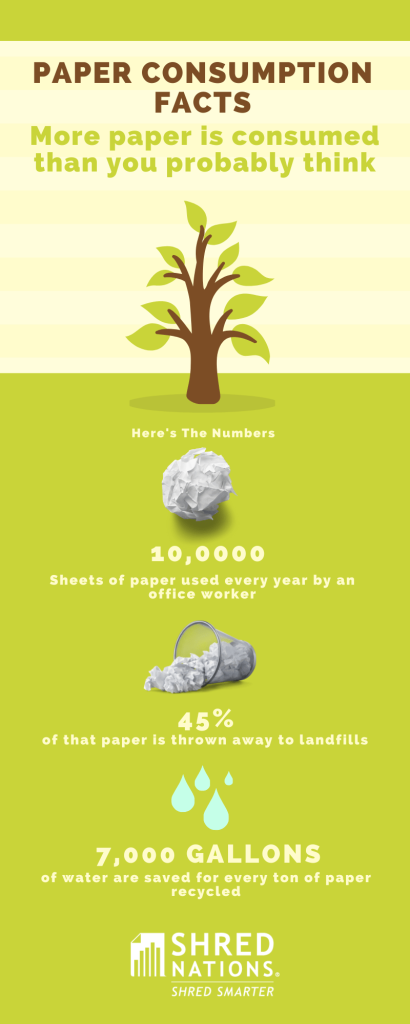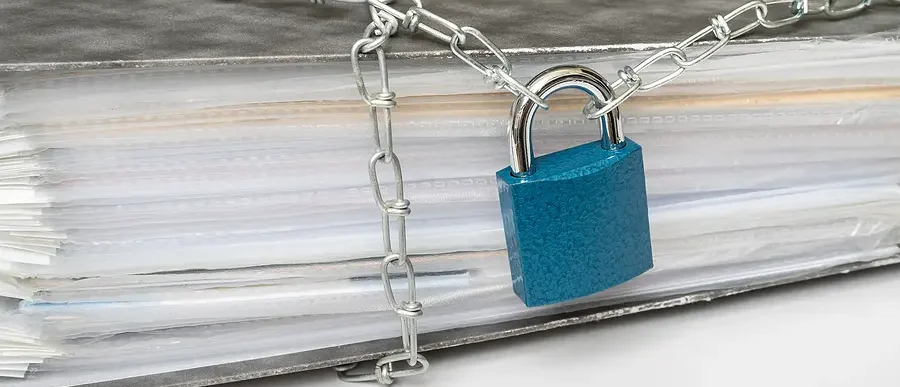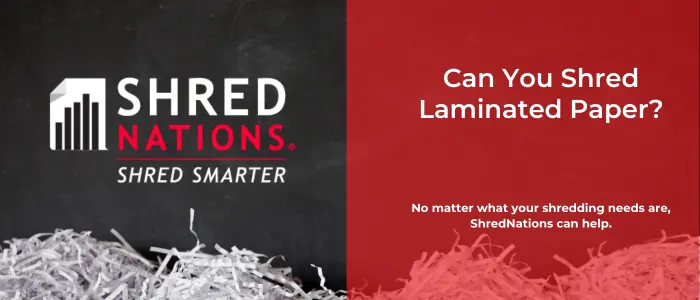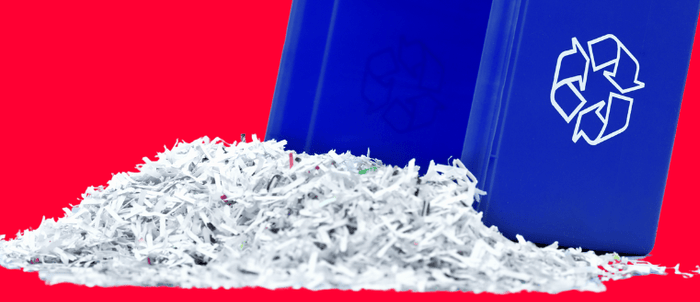
Small business sustainability is more important than ever. Millennials and Gen Z now make up 43% of the U.S. population, and they clearly favor supporting businesses that prioritize sustainability. A Nielsen poll shows that 75% of millennials would change their buying habits to favor sustainable products. Gen Z is the same, with ¾ of the generation stating that they would choose sustainability over brand names.
As a result, sustainability isn’t just good for the planet. It’s good for business as well. While the COVID-19 pandemic led many businesses to digitize to some degree, it’s more than likely that your business still produces significant amounts of paper every day. At least in the near future, it’s unlikely that this will change.
Shredding this paper, instead of throwing it in the waste bin, is a simple and straightforward way for small businesses to become more sustainable. In addition, shredding has the added perk of keeping important business data secure.
Paper Consumption Stats
Paper is a ubiquitous factor of office life. It’s likely that throughout the course of the work week, all manner of paper documents filter through your workspace. The amount of that paper adds up, probably more than you realize.

An average office worker uses around 10,000 sheets of paper a year. Record Nations estimates that 45% of that paper ends up as waste. No matter the size of the business, that paper consumption adds up. For small businesses looking to hit their sustainability goals, shredding and recycling that paper is low-hanging fruit.
According to the EPA, recycling just one ton of paper is the equivalent of powering the average American home for six months. That recycling further saves 7,000 gallons of water, and reduces greenhouse gas emissions by a metric ton.
On a macro scale, paper production is the 5th largest consumer of energy in the world, and nearly 50% of industrial logging goes towards paper production. The good news is that much of that paper is recyclable. Shredding and recycling provides a perfect avenue for small business sustainability, without hurting the bottom line. `
Where Does the Paper Go?
Paper is used in so many products, and that shredded paper could even have multiple lives after its initial recycling. Office paper, in the form of computer and notebook paper, is probably the most common form of paper for most businesses. Once shredded and reprocessed, it can end up as facial tissue, toilet paper, paper towel, napkins, or even as new computer or notebook paper.
Cardboard is also a paper product, and is similar in that it can be repeatedly recycled. Recyclers turn old cardboard into paper bags, new cardboard, paperboard (think pasta boxes), pizza boxes, shoeboxes, and more. In our delivery based world, it’s likely that plenty of cardboard boxes find their way into your office. Recycling these as well is a perfect addition to paper shredding, and another easy way for small businesses to hit their sustainability targets.
Other Paper Strategies That Help Small Businesses Hit Their Sustainability Goals
Shredding and recycling are crucial components of any small business’ sustainability plan when it comes to their paper consumption. However, there are other actions businesses and employees can take to reduce their consumption.
While paper certainly doesn’t feel like a tree, it is made from them. Shredded paper provides an excellent addition to compost and mulch. Plants are more than able to take the nutrients in shredded paper, as part of a compost blend, and blossom.
Sometimes the paper use might not serve a real purpose. If you think that some of your paper use could be digitized, it could be worth looking into a document management system.
Coming full circle, using recycled paper is a great way to make your small business more sustainable.
Shred Nations can Help
If you’re looking to shred and recycle your paper in a sustainable manner, Shred Nations can help. You can give us a call at (800) 747-3365, or fill out the form, and we can connect you to paper recycling services near you within minutes.













